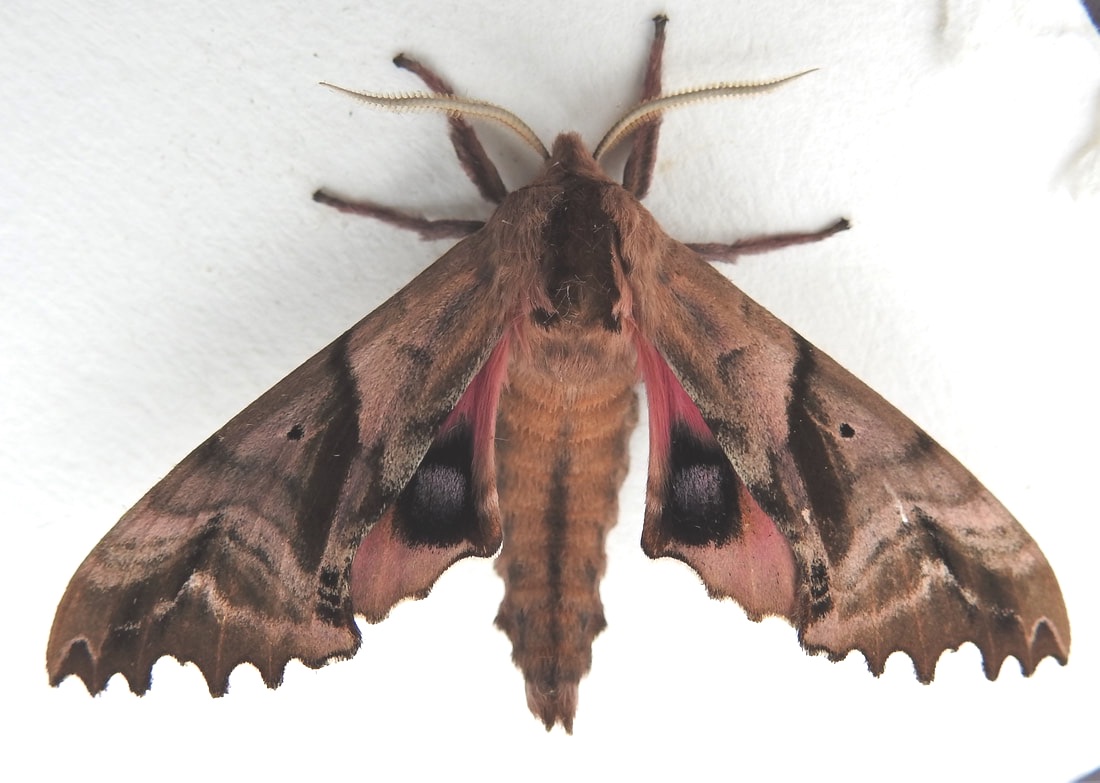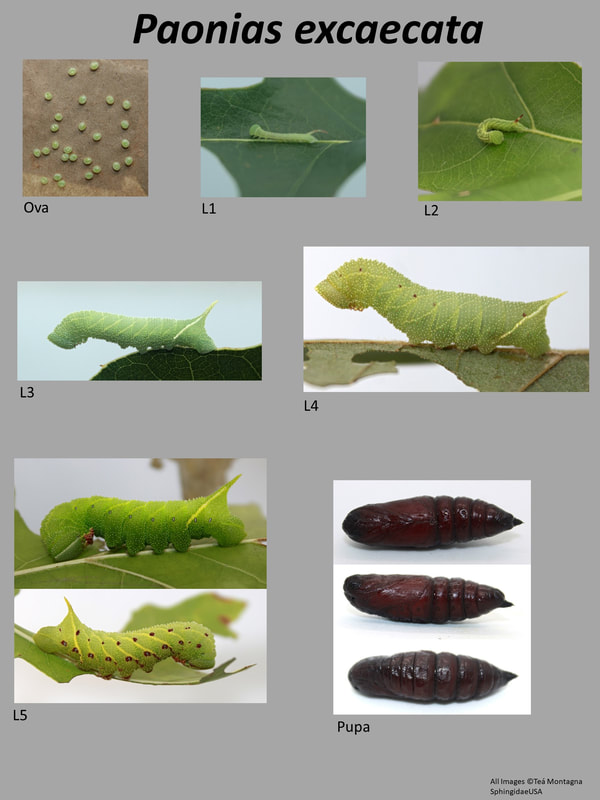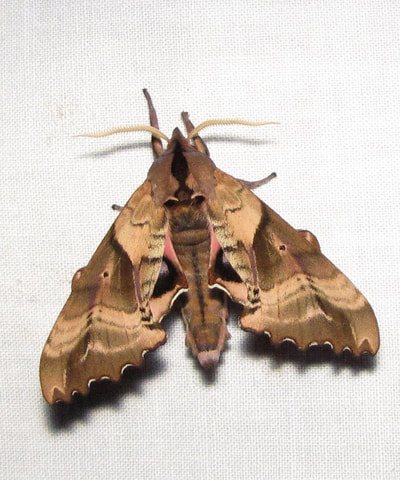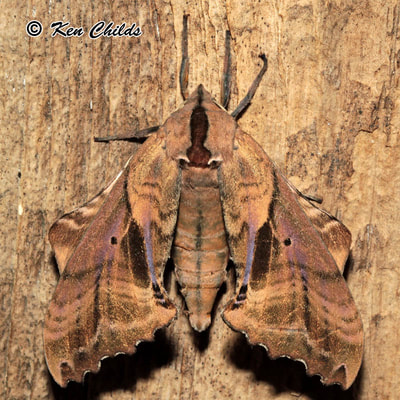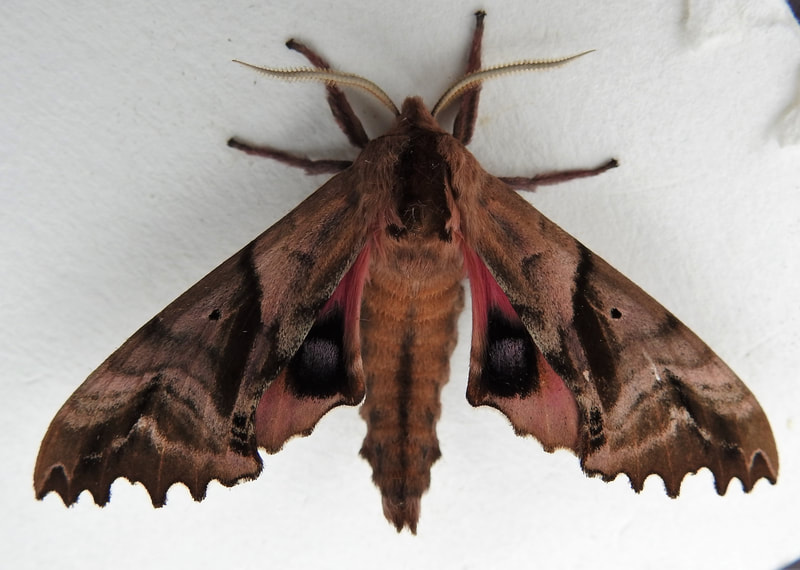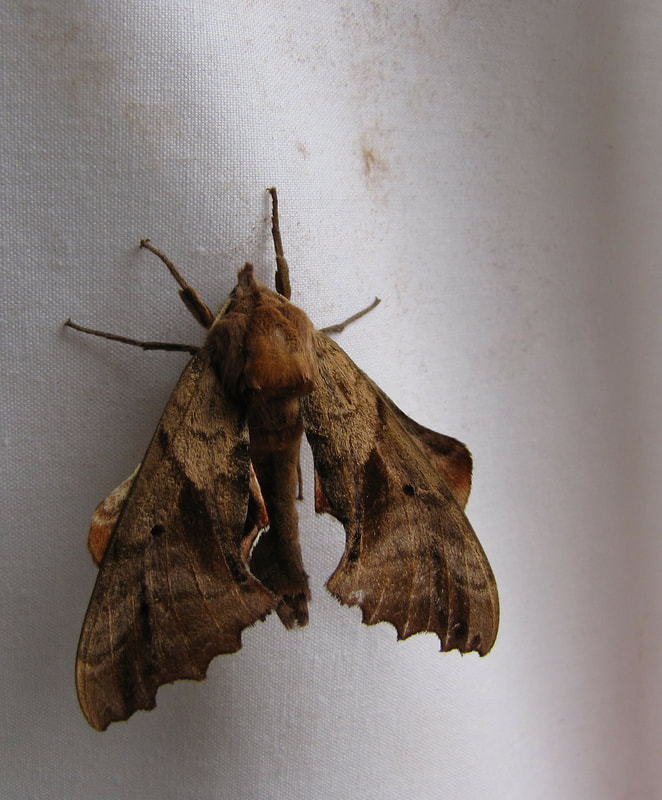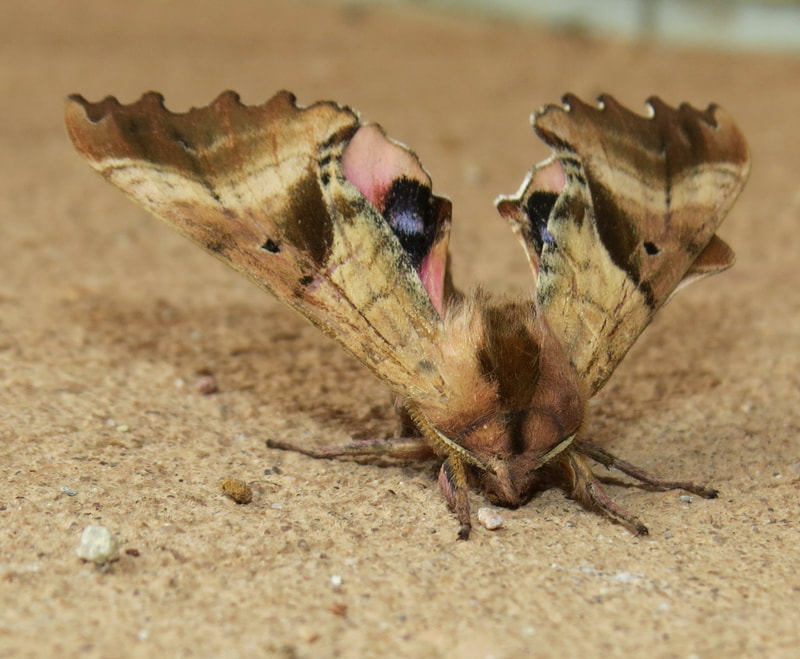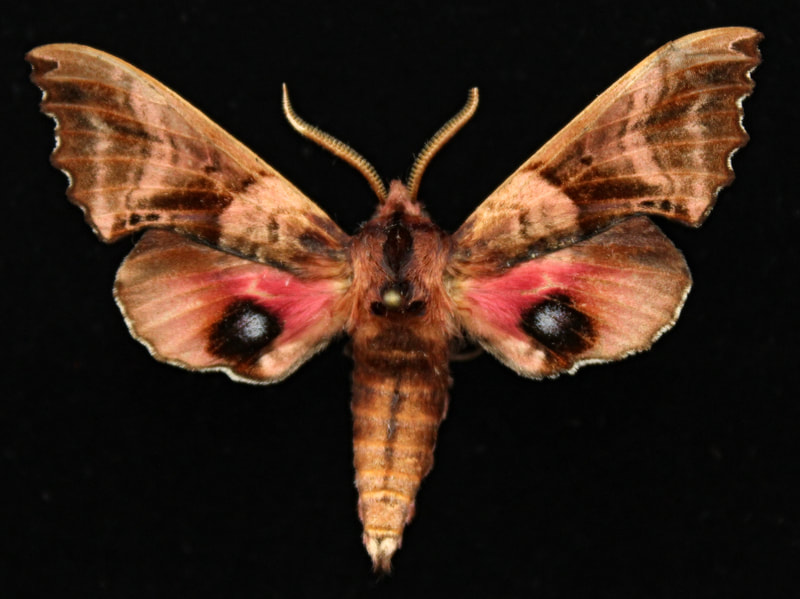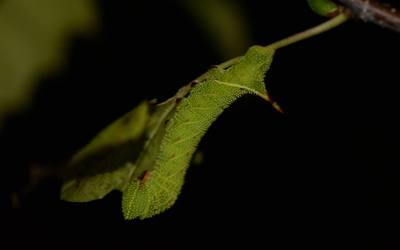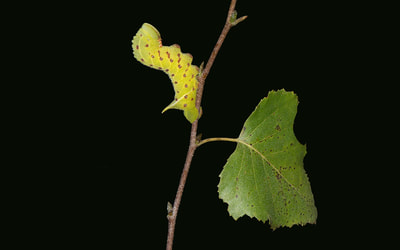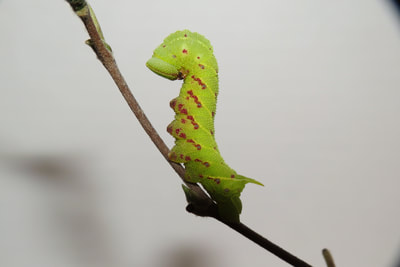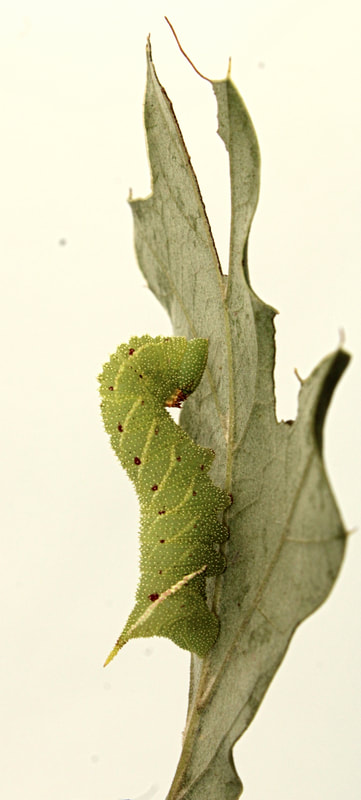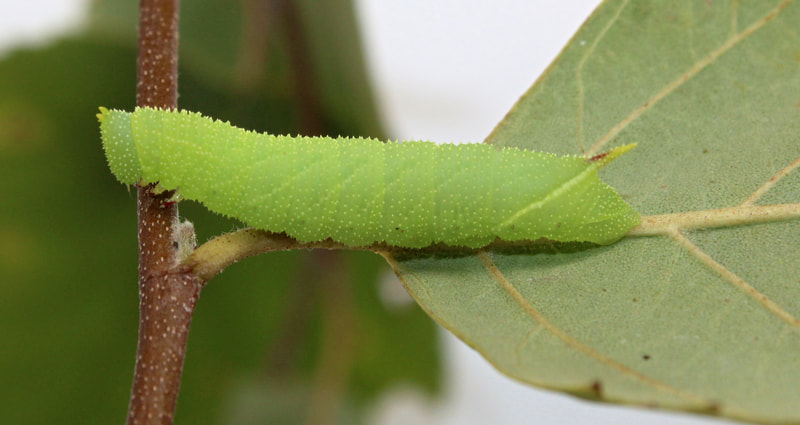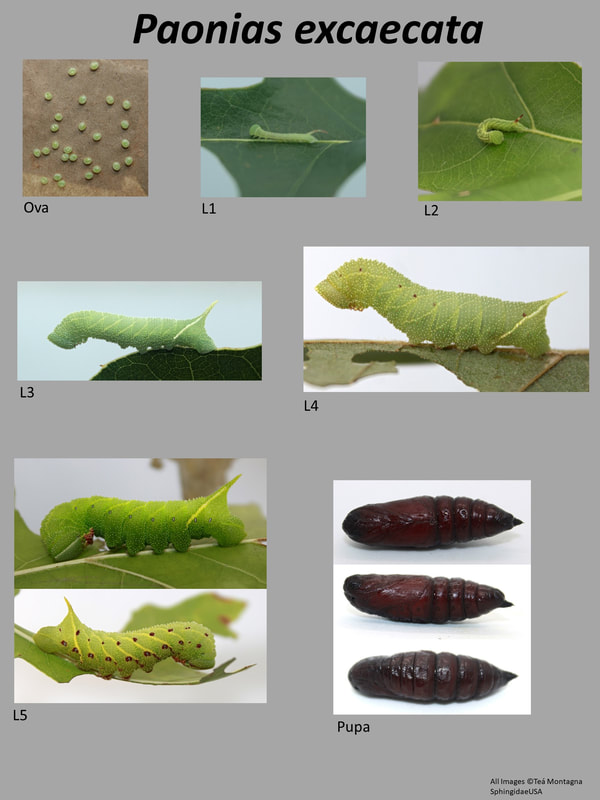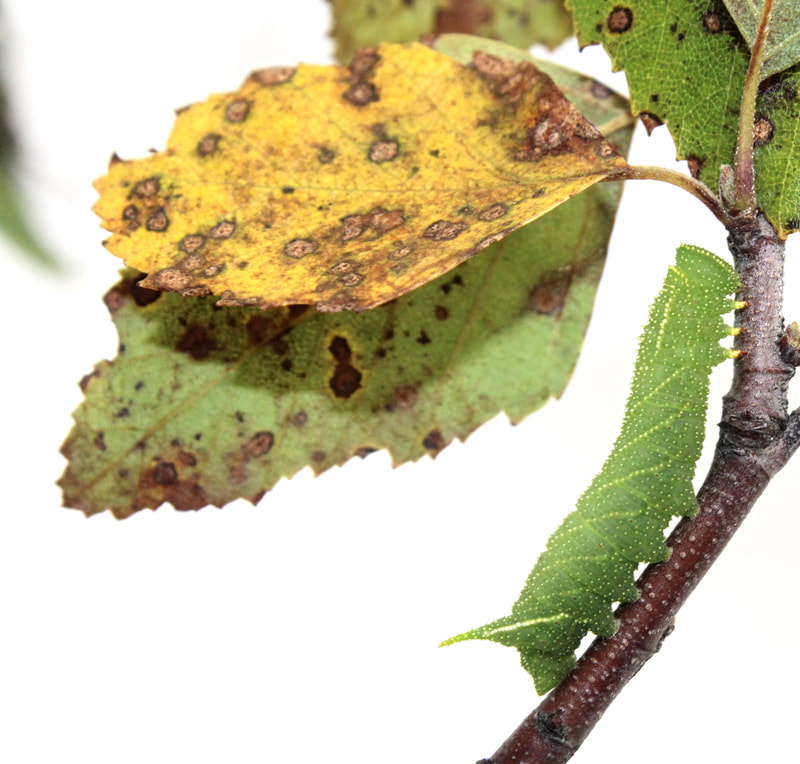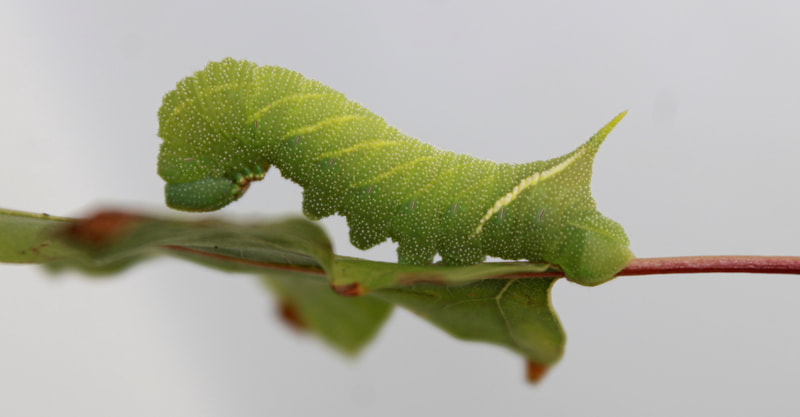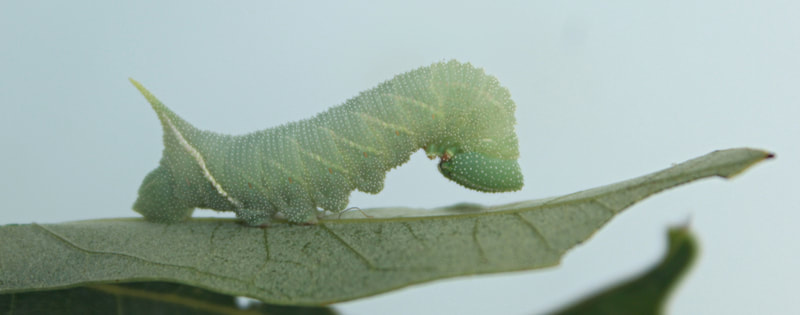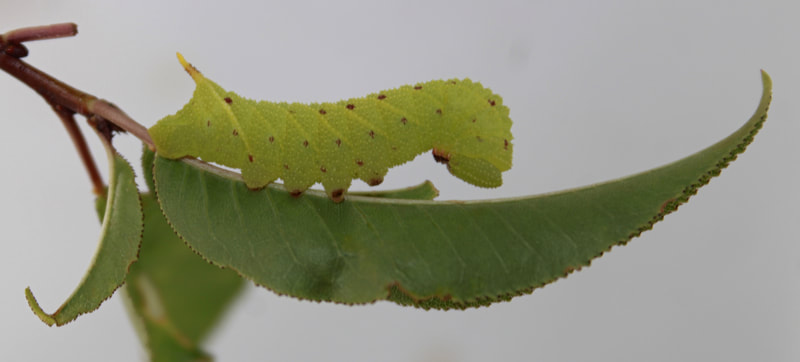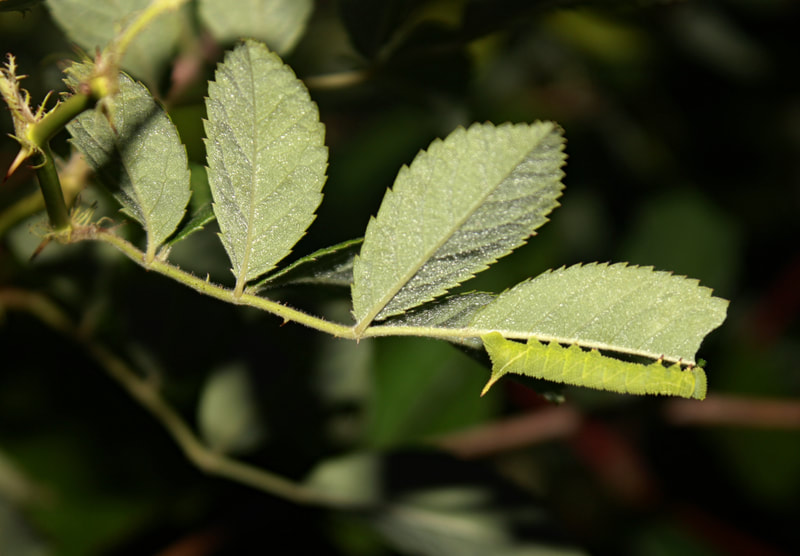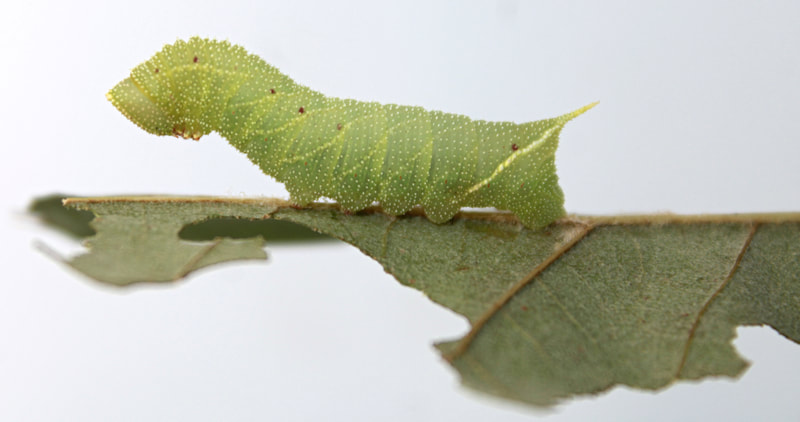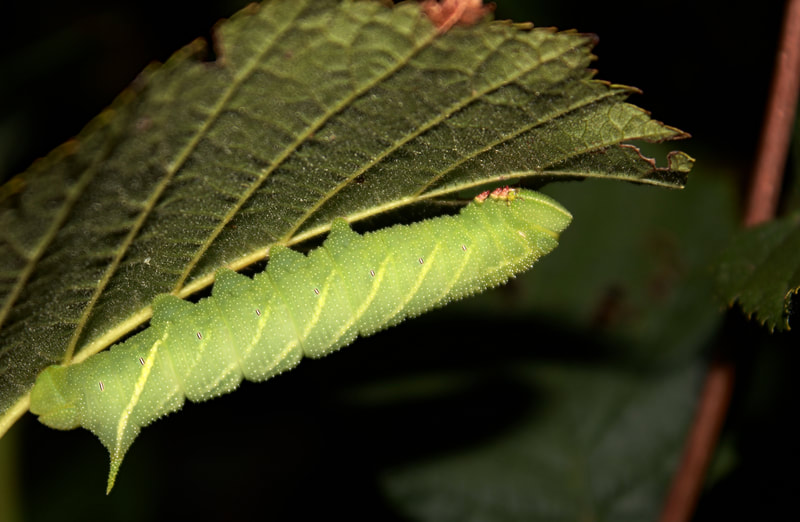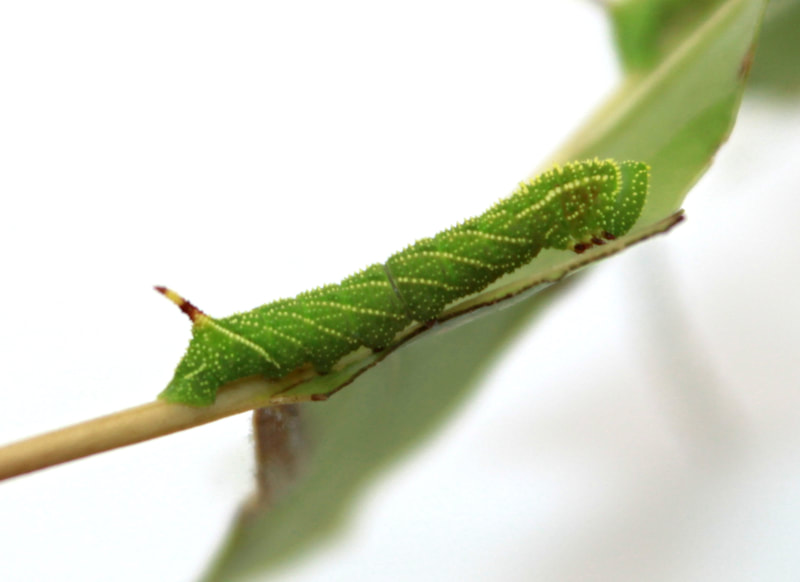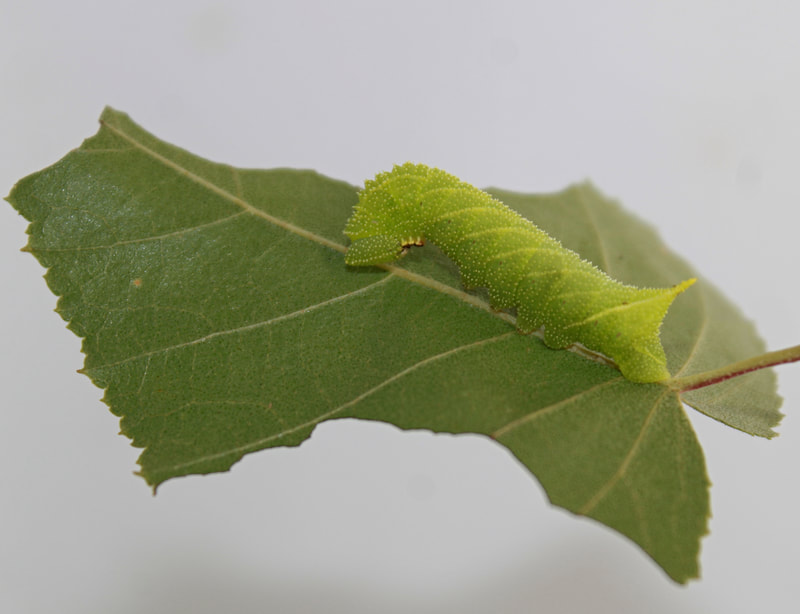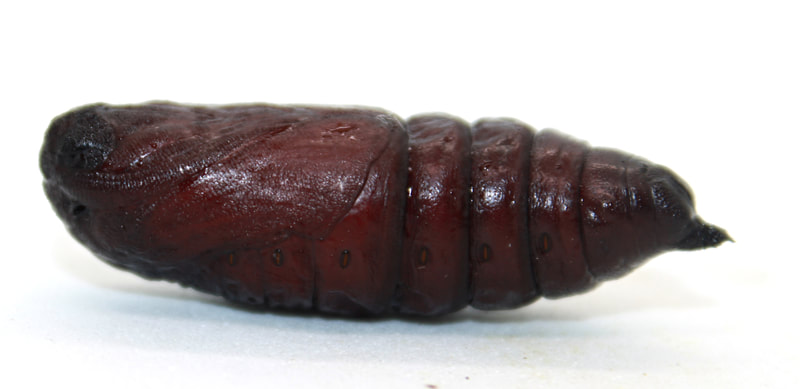|
Common names: Blinded Sphinx
Ecology and Life History Overview: This species seems to only fly in the warmer months in the Northeast, and even in Florida, it doesn’t seem to be recorded from December to March. This species is extremely common at lights, and both sexes are attracted to light. It does not feed as an adult. The adults do have a fairly large size difference, with females being much larger and rounder than males. Habitat and Searching for Larvae: Since this moth seems to feed on seemingly any tree, it can be found in a huge variety of habitats. I have recorded it from every county in Massachusetts, and have found it to be locally abundant in certain places. I haven’t had much luck finding Paonias larvae during the day, however a UV flashlight search at night often yields dozens of larvae. Larvae can be found on nearly any deciduous tree, and many shrubs and bushes. Rearing Notes: This species can be tricky to keep in captivity. Larvae do not tolerate overcrowding well, especially if you are rearing them in tubs. They don’t much like humidity either. Keeping them in a screen cage on cut hostplant is best, or sleeving them directly on a plant. Larvae grow extremely quickly if kept indoors. Adult Description: This moth is fairly small (24-40mm forewing length) with scalloped forewings (2). The continuous forewing scallops are unique to this species within the genus Paonias. The overall appearance of this moth is light brown. There is usually some white streaking near the tips of the forewings. The thorax is distinctly brown with a darker brown triangle. The hindwings of this species are quite distinctive, pink with a black and blue false eyespot. This species’ common name comes from the lack of black markings within the eyespot, making it blinded. This moth can superficially resemble Smerinthus species, but those species are more gray than brown, and they all have hindwings with a dark spot in the blue area of the eyespot. The way this moth sits is unique to the subfamily, and will help you narrow down your identification. If the hindwings are pulled up and are viewable from above the forewings, it’s likely a Smerinthinae. Larval Description: L5: This larva is incredibly variable. It is overall green-blue to green in color and has highly variable red and purple splotches. It can also be without those markings. The horn is granulose and bluish in color. There are 7 white diagonal streaks on the abdominal segments. The last leads to the horn on the back of the larva. |
Hostplants:
Click here to load this Caspio Cloud Database
Cloud Database by Caspio |
The gallery to the left contains photos of Paonias excaecata adults. If you have a photo that you would like to submit to us, please contact us.
The gallery to the right contains photos of Paonias excaecata larval and pupal stages. If you have a photo that you would like to submit to us, please contact us.
The gallery to the right contains photos of Paonias excaecata larval and pupal stages. If you have a photo that you would like to submit to us, please contact us.
|
|
|
